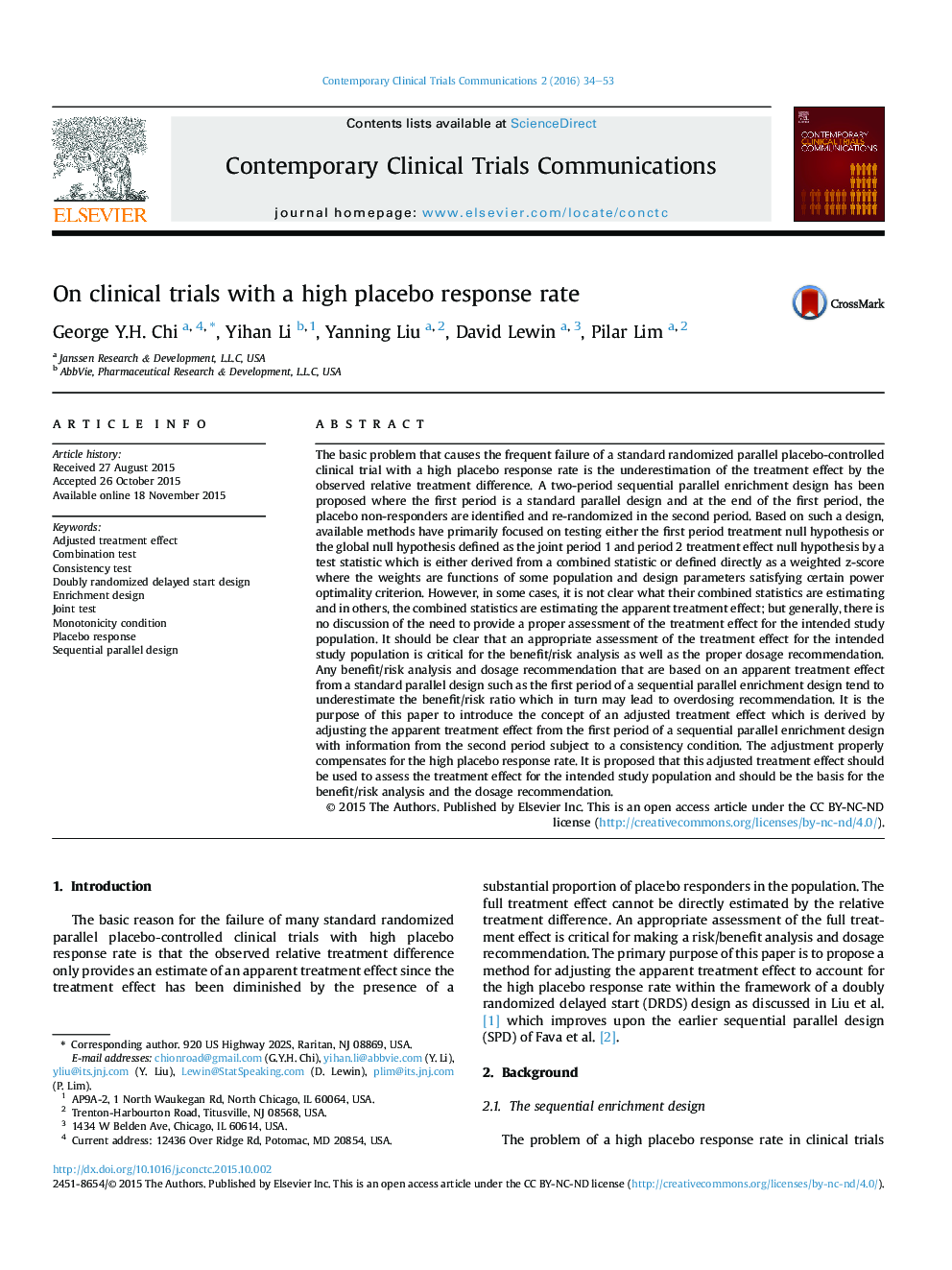| کد مقاله | کد نشریه | سال انتشار | مقاله انگلیسی | نسخه تمام متن |
|---|---|---|---|---|
| 2498720 | 1556795 | 2016 | 20 صفحه PDF | دانلود رایگان |
The basic problem that causes the frequent failure of a standard randomized parallel placebo-controlled clinical trial with a high placebo response rate is the underestimation of the treatment effect by the observed relative treatment difference. A two-period sequential parallel enrichment design has been proposed where the first period is a standard parallel design and at the end of the first period, the placebo non-responders are identified and re-randomized in the second period. Based on such a design, available methods have primarily focused on testing either the first period treatment null hypothesis or the global null hypothesis defined as the joint period 1 and period 2 treatment effect null hypothesis by a test statistic which is either derived from a combined statistic or defined directly as a weighted z-score where the weights are functions of some population and design parameters satisfying certain power optimality criterion. However, in some cases, it is not clear what their combined statistics are estimating and in others, the combined statistics are estimating the apparent treatment effect; but generally, there is no discussion of the need to provide a proper assessment of the treatment effect for the intended study population. It should be clear that an appropriate assessment of the treatment effect for the intended study population is critical for the benefit/risk analysis as well as the proper dosage recommendation. Any benefit/risk analysis and dosage recommendation that are based on an apparent treatment effect from a standard parallel design such as the first period of a sequential parallel enrichment design tend to underestimate the benefit/risk ratio which in turn may lead to overdosing recommendation. It is the purpose of this paper to introduce the concept of an adjusted treatment effect which is derived by adjusting the apparent treatment effect from the first period of a sequential parallel enrichment design with information from the second period subject to a consistency condition. The adjustment properly compensates for the high placebo response rate. It is proposed that this adjusted treatment effect should be used to assess the treatment effect for the intended study population and should be the basis for the benefit/risk analysis and the dosage recommendation.
Journal: Contemporary Clinical Trials Communications - Volume 2, 15 April 2016, Pages 34–53
